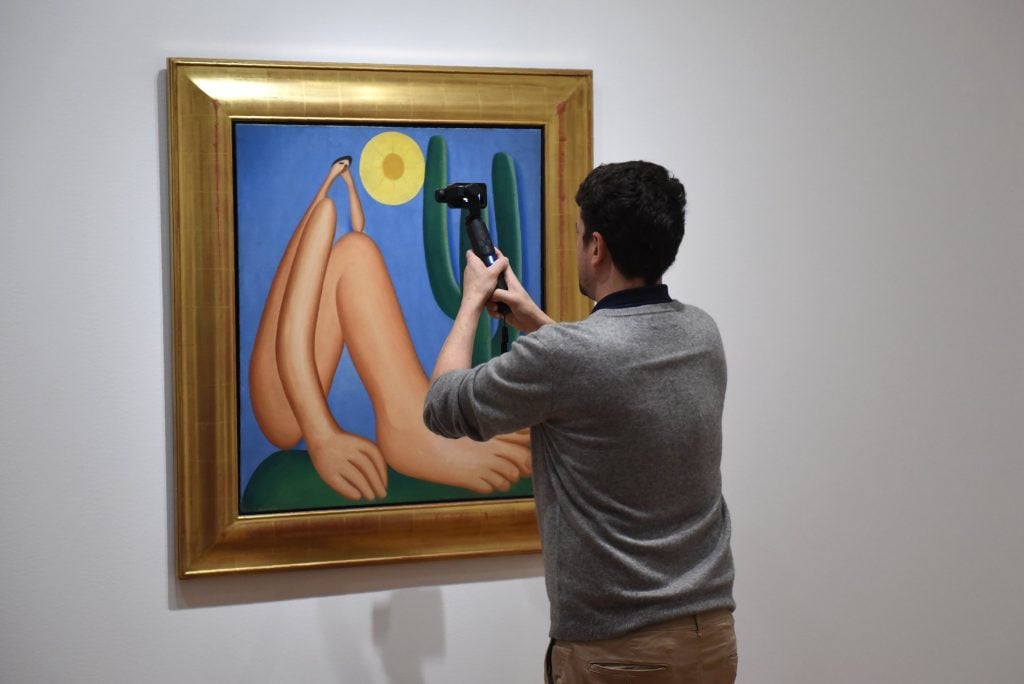Art World
Debating the Troubled Legacy of Brazil’s Cannibalist Art Movement + 4 Other Great Art Essays Worth Reading From This February
A round-up of ideas from around the art web.

A round-up of ideas from around the art web.

by
Ben Davis

It’s near impossible to keep up with everything that comes at you through the news feed each day—let alone everything that was published about art in the last four weeks. Here’s my monthly attempt to crack open the virtual magazine rack, read a bunch, and sift for ideas I think are worth debating or holding on to. If there’s something I missed that was good, I probably just ran out of time.
Below are five essays that I think are worth sharing from February 2021.
It’s been 90-some years since Oswald de Andrade’s “Manifesto Antropófago” (“Cannibalist Manifesto”), a document that was a watershed in defining a Brazilian art outside of European influence, and extremely influential on Brazil’s ’60s avant-garde. The limits and biases of its bourgeois appeal to the cultures of Indigenous and Afro-Brazilians has been questioned and debated of late by a new generation of artists and intellectuals in Brazil. Gualberto, an artist, and Roffino, a Rail editor, introduce both the importance of the Manifesto and the context of the contemporary rethinking of its legacy. The Rail issue as a whole brings together essays from those engaged in the debate, from Sergio Vaz’s “Anthropophagous Manifesto from the Periphery” to Cripta Djan’s first-hand account of his work as a pixador, a particularly aggressive form of Brazilian tagger.
It’s not every day an essay puts a name on a new movement. For his sweeping introduction to a special issue of Time that actually goes so far as to draw up a canon that defines a New Black Renaissance, Kendi gathers together a very large, disparate list of contemporary cultural productions, from Childish Gambino’s This Is America to HBO’s Lovecraft Country to artists Awol Erizku and Amy Sherald (Erizku, oddly, is identified as a painter, even though he’s a photographer who shot the cover for the issue). Kendi’s big claim—that together, these works represent “the third great cultural revival of Black Americans, after the Harlem Renaissance of the 1920s, after the Black Arts Movement of the 1960s and 1970s”—is sure to be both a major reference point going forward and fodder for debate.
A provocative argument that could be read as being in counterpoint with Kendi, Stimson’s essay makes the case for understanding the important distinction, for cultural theory, between “colonialism” and “neocolonialism.” The latter wasn’t just the continuation of the old colonialism, with its naked imposition of European cultural norms. As theorized by Jean-Paul Sartre and Kwame Nkrumah alike, the concept of neocolonialism was an attempt to understand forms of economic and political domination that worked via shifting towards a rhetoric of recognizing and affirming national cultures, as the United States moved to displace Europe’s influence with its own. The cynical side of this rhetoric has consequences that, Stimson argues, haunt debate about the politics of culture today.
A lovely essay by Atlanta-based artist Erin Jane Nelson on what it has meant to be an artist growing up in the age of the art internet. It’s worth the read alone for the anecdote about watching Lucien Smith reverse-engineer his popular paintings by studying what was cool on the art blogs while at Cooper Union. But it’s really worth it just to be reminded of the meaningful creative pathways that the web has opened for artists outside art capitals (and the doors that it has yet to open, too).
Danish curator and critic Ugelvig offers a tour of the ways that global lockdown has led to a new focus on local art scenes, away from frenetic, short-attention span forms of jet-setting art-circuit cosmopolitanism. He quotes art professionals talking about both positive outcomes from this year of forced deceleration (“It’s just like in the 1990s”) and negative ones (“the risk is to become mediocre—namely, curating your circle of friends because private foundations grant money to support the local art scene”).